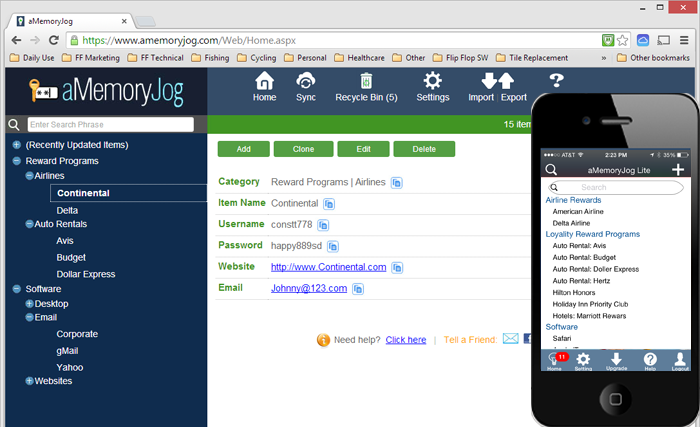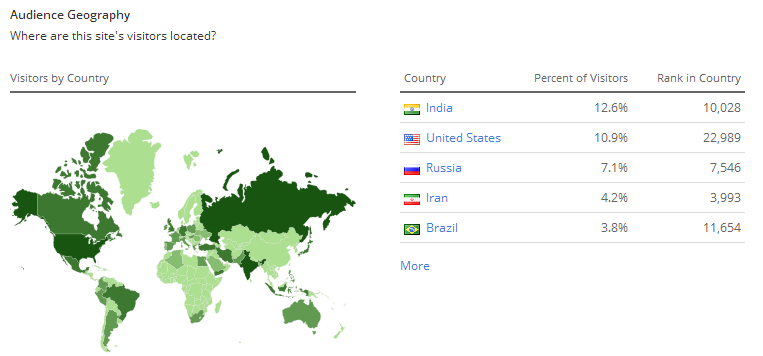I’ve been blogging for years, but I’ve just started taking it more seriously a couple of months ago. I decided I would start blogging more often and I wanted a way to determine how well the strategy was working. Here are some strategies for determining your blog popularity using Alexa and to build your following more quickly.
Using Alexa to Determine Blog Popularity
Alexa (http://www.Alexa.com) is a ranking system created by Amazon that tracks the number of visitors sites get. The lower your Alexa score, the more popular your site is — if your score is below 200,000, you’ve got a pretty popular website.
When I first checked my Alexa ranking a couple of months ago, it had a Global Ranking over 10 million and the USA ranking was over 1 million. Not so good.
Now after 3 months of focused blogging, I have improved my Alexa ranking to just over 1 million globally and about 148,000 in the USA and it is improving by leaps and bounds each month.
Related Post: Success stories for driving more blog visits
Using Alexa to Analyze Your Website
If you want to check your Alexa ranking, simply navigate to Alexa.com and type in your website URL, it will analyze your site.
Alexa Traffic Rank
Here’s what mine says as of the date of publishing (October 2015):
Once my blog is ranked under 100,000, it will start to compare my site to others so I am working hard to reduce my ranking. It will also tell you where the majority of your traffic comes from — for me it is from the USA and India.
Visitor Engagement
Next, it shows me how engaged my visitors are, here are my stats:
I am pretty proud of these numbers, here’s what they mean:
- Bounce Rate – This is how often people come to my site and only view the page they landed on. For my site, it is 34% of the time. In other words, 66% of the time, people find other content on my website that they like and continue looking at other pages. If you can get your bounce rate to 50% or less, you are doing well.
- Daily Pageviews per Visitor – This is the number of pages a single user will view on your site in one day. If you can get this number over 3, you are doing well.
- Daily Time on Site – This is how long people are hanging out on your site. My visitors are spending over 10 minutes a day on my site — that’s pretty good. If you can get that number over 5 minutes, it is good.
Sites Linking In
Finally, use Alexa to view the number of sites that are linking to you. If other sites are linking to your site, search engines reward you because it assumes you have important content on your site. One of your strategies is to get more people linking to your site and this is a way of determining if this strategy is working:
The Alexa Toolbar
If you want to check the Alexa ranking of any site you land on, consider installing the Alexa toolbar, it makes it a lot easier.
How I Improved My Alexa Ranking
I greatly improved my site visits and Alexa ranking in under 3 months, so you may be wondering how I did it. Here’s my strategy:
- Create Great Content – I spend a lot of time thinking of interesting content that I think others will enjoy.
- Blog often – I try to create at least one new blog post a week, more if I can.
- Make each blog SEO friendly – If you’re spending the time creating a blog post, make it SEO friendly so that the search engines can find it, here is how to do that.
- Market each blog post – I market my blog posts on Twitter, Facebook, Stumble Upon, ViralContentBuzz, Google+, LinkedIn, BlogSpot, Tumblr, Pinterest, Medium, Niume.com, Buzzsumo, and Gizmodo.
- Follow Other Blogs – I follow other bloggers that I admire and am interested in. Each time they post a blog, I post a comment on their blog. Many of those blogs use a tool called CommentLuv which puts a backlink to your website when you post a comment. This is how to get other sites linking back to you.
- Build Your Twitter Following – At the time of this writing, I have almost 22,000 Twitter followers. When you tweet something (like your blog post), a lot of people see it and many times they will retweet it to their followers. Use a tool like Crowdfire to build your following.
- Participate in Discussion Forums – I regularly participate in discussion forums where I ask and respond to questions. In each forum, I have a link to my blog and my Twitter account. People are curious and will visit your site as they see you posting in these forums. The forums I used most often are Mr. Money Mustache, Reddit, and Blonde on a Budget. I don’t use this strategy specifically to drive traffic, I just enjoy the interactions. But it does have a side benefit of driving traffic.
- Joining a Tribe – I’ve just discovered this technique, but the idea is that you can interact with a group of other people that have similar blog content and you can share each other’s content. The software I use for this is Triberr and I think this will become a regular part of my blog strategy.
- Create an About.Me page – An About.Me page is an online profile where others can learn about you, here is mine. I include that information in the signature line of each email that I send out, here is how my email signature looks:
Steve Miller
www.FlipFlopSoftware.com
Twitter | Facebook | LinkedIn | About.Me
Conclusion
With a bit of effort, you can drive more visitors to your website and improve your Alexa ranking. I hope you enjoyed the tips I provided for building your website following, do you have other tips that I haven’t considered?
Related Post: Success stories for driving more blog visits
About this Blog
Steve and his wife built a software company, sold it and retired early. Steve enjoys blogging about lifestyle freedom, financial independence, and technology. If you like this blog, subscribe here to get an email each time he posts.
If you like this post, you might also like these prior posts:
- Success stories for driving more blog visits
- 10 Tips to Boost Your Google Ranking
- How to Build a Product Website
- Wanderlust began 26 years ago
Follow me: Twitter | Facebook | LinkedIn | Subscribe to this Blog










